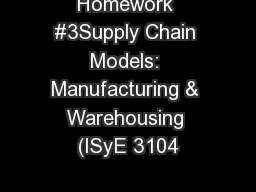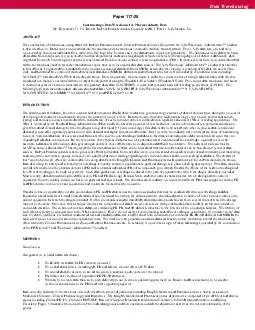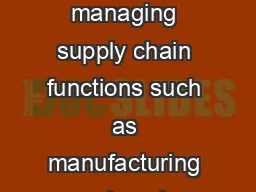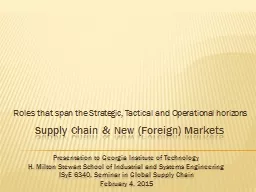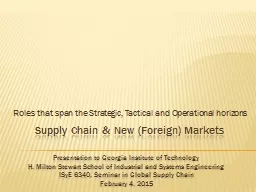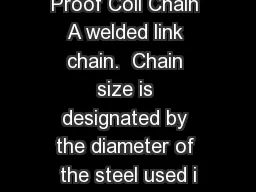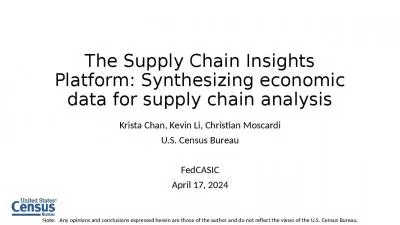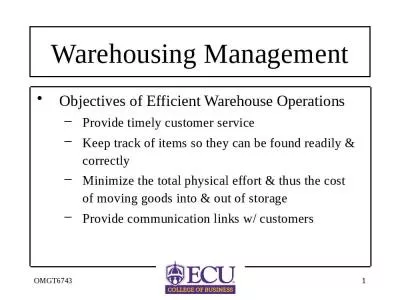PDF-Homework #3Supply Chain Models: Manufacturing & Warehousing (ISyE 3104
Author : natalia-silvester | Published Date : 2015-12-10
April118500 May229300 June2012200 July2317600 August1614000 September206300 As of March 31 Yeasty had 86 workers on the payroll Over a period of 26 workingdays when
Presentation Embed Code
Download Presentation
Download Presentation The PPT/PDF document "Homework #3Supply Chain Models: Manufact..." is the property of its rightful owner. Permission is granted to download and print the materials on this website for personal, non-commercial use only, and to display it on your personal computer provided you do not modify the materials and that you retain all copyright notices contained in the materials. By downloading content from our website, you accept the terms of this agreement.
Homework #3Supply Chain Models: Manufacturing & Warehousing (ISyE 3104: Transcript
Download Rules Of Document
"Homework #3Supply Chain Models: Manufacturing & Warehousing (ISyE 3104"The content belongs to its owner. You may download and print it for personal use, without modification, and keep all copyright notices. By downloading, you agree to these terms.
Related Documents

